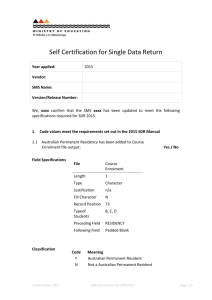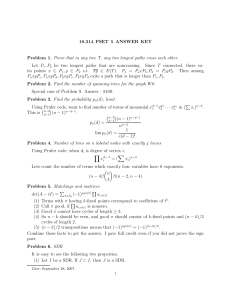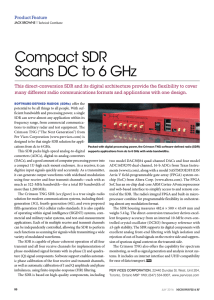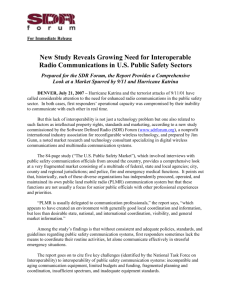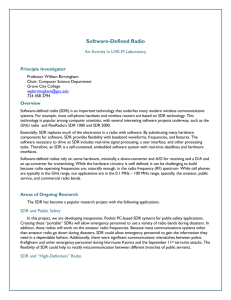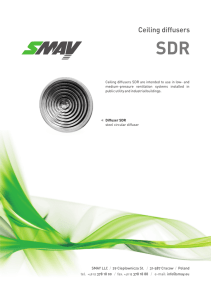david-reay
advertisement
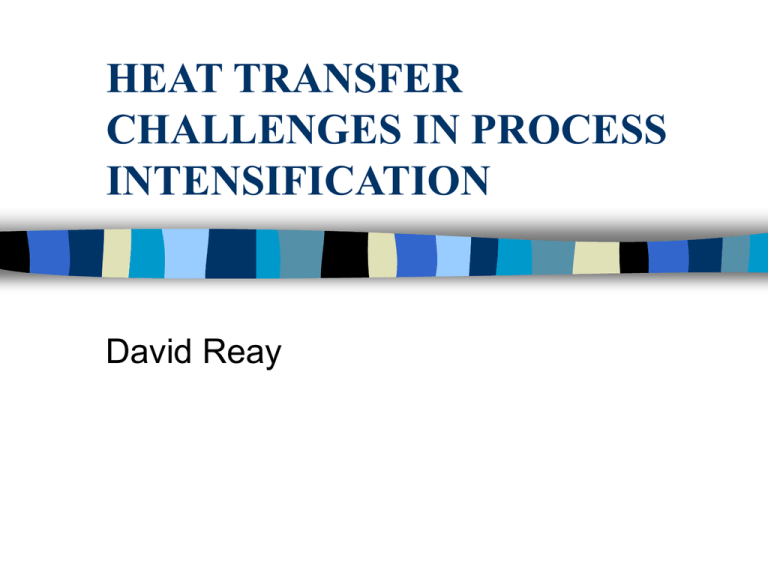
HEAT TRANSFER CHALLENGES IN PROCESS INTENSIFICATION David Reay What is Process Intensification? In the words of chemical engineers: PI significantly increases transport rates It gives every molecule the same processing experience It can also lead to improved energy efficiency, smaller & lower cost plant and safer processing (e.g. by reduced inventories). It can permit local production of food/chemicals. HEXAG Relevance Highly compact/micro-heat exchangers Heat exchanger- and micro-reactors Heat pipes Heat transfer enhancement – Rotation – Electric fields – Mixing etc. PI is not new The Audiffren Singrun refrigerator of 1905 (France) used centrifugal forces to distribute the fluid. This was SO2. The NASA Rotating Boiler – 1950s Heat fluxes to 257 W/sq.cm; 400 G. Suggested >600 W/cm.sq. at 1000 G Critical heat flux increased compared to 1-G, but HTC similar. The rotating air conditioning unit around the same time – based upon a rotating heat pipe & axial flow compressor, with evaporation in fan blades (LHS) and liquid return via a tapering tube. Rotex or Rotartica – Absorption airconditioner. Highly compact heat exchangers The basis of HEX-reactors, with catalysts on each side. Hundreds of channels, each needing identical feeds – here for hydrogen production. Toshiba mobile phone 100 mW direct methanol fuel cell (2005) – where micro heat exchanger/reactor technology is needed. Spinning disc reactor Rotation to 10,000 rpm; used for food processing & chemical reactions. Needs to deal with very rapid exo- or endothermic processes on the top surface. SDR Wave formation – strong mixing in a thin film SDR Temperature distribution Uniform/isothermal heating of treacle! Thermal control on an SDR Overall U of 10 kW/sq.m.K – transfers 39 kW from a 0.5 m diameter disc with a 20 K temperature difference, even for organic fluids. Custard manufacture Milk & custard powder are introduced onto the centre of the SDR – continuous production is feasible. Spinning cone is a variant – in this case to make barium sulphate. Nano particle productions is done in China. Plasma or laser reactors Ceramic micro-heat exchanger Basis of high temperature reactions – still fabrication problems. Scale in cm. The Honeywell Hymatic IR Detector Cooler Metal mesh heat exchanger. Camb. Univ. Cross-flow configuration here, with cooling flow horizontal. Pressure to compact the mesh layers. Mesh performance data for air & water (LFM = lattice frame material) Taylor-Couette flows between two closely spaced cylinders, one of which rotates. Laminar flow – used for reactions. It does throw up the question over whether the use of bulk fluid properties such as viscosity are appropriate in such equipment – the same question hangs over flow and heat transfer in microchannels. Heat spreading in reactors – 6% yield increase in China The ‘ARCTIC’ chip cooler Wankel-type rotary compressor; 25 mm x 30 mm footprint; COP 4.6; 45 W duty; 40 K temp.diff.; 1000 rpm compressor speed. A laptop – like the earlier mobile phone! The chip still needs cooling, as well as the thermal control of the fuel cell reformer. The methanol supply is shown temporarily fitted to the laptop. (NEC) Capillary-pumped loop for chip cooling 130 W duty; passive Finally - Ashe-Morris complex geometries Variable channels & agitated cells as reactor bases.

